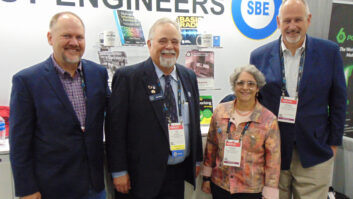NEW YORK� According to the Verizon, recent LTE-Advanced deployments will improve peak data speeds by 50% in 461 markets across the country.The company says it�s using carrier aggregation (both two-channel and three-channel) that combines spectrum in the 700 MHz, 1.7/2.1 GHz and 1.9 GHz bands. The two-channel carrier aggregation can boost peak download speeds to 225 Mbps, and three-channel carrier aggregation can boost speeds to around 300 Mbps.

Verizon Wireless� initial LTE deployment relied on 20 megahertz of nationwide 700 MHz spectrum the carrier acquired as part of the FCC�s Auction 73 process in 2008, as well as separate deals that helped to fill in coverage gaps. In 2014, the carrier rolled out itsXLTE program, which included the addition ofup to 20-megahertz of additional spectrumin the 1.7/2.1 GHz bands acquired inspectrum auctionsandadditional deals, according torcrwireless.com.
�
Sprint recently unveiled that three-channel carrier aggregation is active on 500 Chicago-area cell sites, and now that company is deploying the technology in its home market of Kansas City, Kansas,�with a promise to deploy upgraded technology, based on the LTE-Advanced standard, to some 100 cell sites in the city, also according torcrwireless.com.
�
Recently, Sprint and Nokia achieved a peak data rate of 230�Mbps during a demo inside Kauffman Stadium prior to the big-league baseball game between the hometown Royals and New York Yankees.
�
Sprint began rolling out two-channel carrier aggregation in 2015 in 237 markets using 40 megahertz of spectrum in the 2.5 GHz band. Their three-channel carrier aggregation uses 60 megahertz of spectrum in the 2.5 GHz band. Sprint�s spectrum portfolio includes more than 160 megahertz in the 2.5 GHz band, along with holdings in the 800 MHz and 1.9 GHz bands.
�












